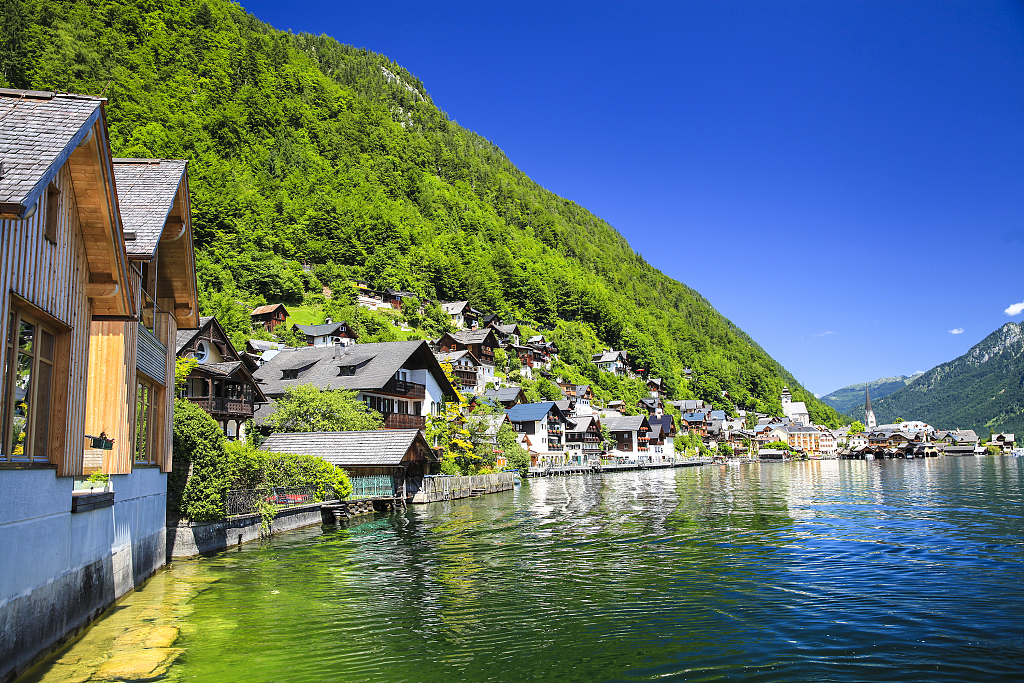FACTS
The Republic of Austria, Republik Österreich
Capital: Vienna
Population: 8.86 million
Area: 83,879 square kilometers
Major languages: German
Official currency: EURO
Religion: 61.4% Catholic
National Day: October 26
Geography:
Austria is a country in Central Europe comprising nine federated states, bordered by the Czech Republic and Germany to the north, Hungary and Slovakia to the east, Slovenia and Italy to the south, and Switzerland and Liechtenstein to the west. The terrain is landlocked and highly mountainous, lying within the Alps; only 32% of the country is below 500 m.
The greater part of Austria lies in the cool/temperate climate zone, where humid westerly winds predominate. With nearly three-quarters of the country dominated by the Alps, the alpine climate is predominant. In the east—in the Pannonian Plain and along the Danube valley—the climate shows continental features with less rain than the alpine areas.

Photo: VCG
Economy
Austria is one of the 14 richest countries in the world in terms of GDP per capita, has a well-developed social market economy, and a high standard of living.
Valued at 81.3 billion euros in total, Austria's industries such as mining, construction, machinery, electron and car-making are global competitors, accounting for 22 percent of its GDP.
Next to a highly developed industry, international tourism is the most important part of the economy of Austria. Austria has welcomed 150 million tourists in 2018 with 73 percentage are foreigners.
Besides, the service sector generates the vast majority of Austria's GDP. Vienna has grown into a finance and consulting metropolis and has established itself as the door to the East within the last decades. Viennese law firms and banks are among the leading corporations in business with the new EU member states.
Austrian farms, like those of other west European mountainous countries, are small and fragmented, and production is relatively expensive. Austrian farmers provide about 80% of domestic food requirements.
The 2018 economic indicators are as follows:
Gross domestic product: $386.1 billion
Per capita GDP: $43,660
Economic growth rate: 2.7 percent
Main exports: machinery and equipment, motor vehicles and parts, manufactured goods, chemicals, iron and steel, etc
Main imports: machinery and equipment, motor vehicles, chemicals, metal goods, oil and oil products, natural gas; foodstuffs
Politics
Head of State:
President: Alexander Van der Bellen
Federal Chancellor: Sebastian Kurz
Ruling party: Österreichische Volkspartei (ÖVP) and Freiheitliche Partei Österreichs (FPÖ)
Austria became a federal, representative democratic republic through the Federal Constitution of 1920. The head of state is the Federal President (Bundespräsident), who is directly elected by popular vote. The chairman of the Federal Government is the Federal Chancellor, who is appointed by the President.
After a snap election proclaimed in October 2017, the ÖVP has decided to form a coalition with the FPÖ, the new government between the center-right wing and the right-wing populist party under the new chancellor Sebastian Kurz was sworn in on 18 December 2017.
Relations with China
l On May 28, 1971, China and Austria established diplomatic relations.
l Since 1973, China and Austria have had an exchange student program. By the end of 2017, 3,241 Chinese students were recorded in Austria and a total of 124 pairs of sister schools have been established between the two countries.
l In March 2003, China provided a pair of pandas to Austrian zoo for cooperative breeding research.
l In 2007, the first Confucius institute was set up in Vienna.
l In October 2000, agreements on tourism cooperation were signed. In 2018, a total of 70,000 Austrians have visited China, up 4 percent compared to the year before. During the same year, 973,000 Chinese visited Austria, with 140,000 have stayed overnight.
l In 2015, Austrian President Heinz Fischer signed agreements to include Austria in the China-led Asian Infrastructure Investment Bank.
l In 2015, Austria’s trade with China rose by 16.7 percent to $8.25 billion last year. China was Austria's second-largest trading partner outside the European Union.
l In February 2015, agreements on bilateral scientific cooperation were signed.
l 2016 marks the 45th anniversary of establishment of diplomatic ties between the two countries, a series of cultural activities were held to celebrate.
l In 2017, the Chinese Academy of Sciences and the Austrian Academy of Sciences enabled the real-world intercontinental quantum communications by successfully holding a 75-minute video conference secured by a quantum communication mechanism.
l In April 2018, Chinese President Xi Jinping and his visiting counterpart, Alexander Van der Bellen, witnessed the signing of several bilateral cooperation agreements, ranging from the areas of Belt and Road cooperation, judiciary, innovation, transportation and modern distribution, to culture, sports and intellectual property rights. The two countries agreed to establish bilateral friendly strategic partnership.
l In 2018, trade between China and Austria rose by 16.2 percent to $9.75 billion, among which, China's exports to Austria totaled $2.83 billion, up 11.9 percent year-on-year. Principle exports include clothes, medicine, lanterns, shoes and automatic data processing equipment. Principle imports are integrated circuit, non-foam plastic sheets, steel and medicine.
l As of January 2019, China has signed 2,320 technology in technology import contracts, with a cumulative value of $6.35 billion.
l As of January 2019, China has approved 1,308 Austrian projects with actual investment of $2.17 billion.
l As of January 2019. China has directly invested $1.04 billion in total in Austria.
l As of January 2019, 18 pairs of sister provinces/cities have been made between the two countries.


